THE TERRITORY OF
Refosco di Faedis
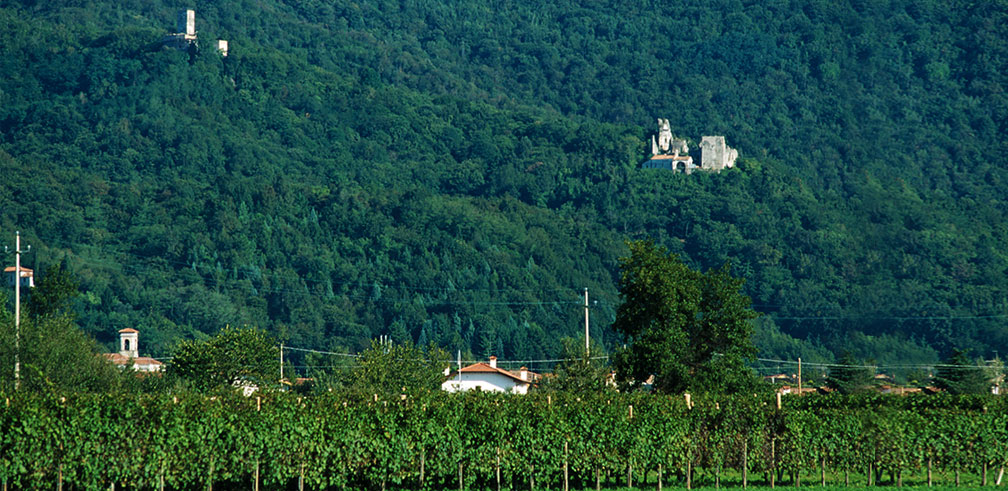
Wine embraces within its perfumes, colours and flavours the image and features of the territory where it was made and today, perhaps more than ever before, has acquired an enviable personality and typical local character created thanks to modern technologies combined with an ancient heritage.
Wine, like bread, does not exist in nature. Wine is made and inasmuch its essence is also made in the image and resemblance of the people who make it and has changed profoundly - like people themselves - over time.This characteristic of wine reverberating with the beauties of a territory and the essence of the people who make it is particularly evident in Refosco di Faedis.
When enjoying the bouquet of this splendid wine, I sense the compelling aroma of my homeland during the harvest period, the tart odour of must bubbling in the vats, the satisfaction of wine-makers watching their work coming to highly-perfumed life.
When I see through the convex glass its ruby-red and violet flashes of light, I am inevitably reminded of those vivid sunsets glimpsed after a storm behind the hills marking the eastern border of our territory.
When, lastly, its flavours stimulate my palate and fill my mouth with a strong yet delicately pungent taste, I naturally think of the character of my people: gruff - but only apparently so - perhaps unable to express their deepest feelings in words but exceptional in doing so with facts, generous and even a little sentimental.
And the bouquets, colours and flavours always culminate in that marvellous warmth that this wine releases in my throat and then in my stomach.
And then I close my eyes for a moment and feel the pride of being born here and living among such people.
PRODUCTION AREA
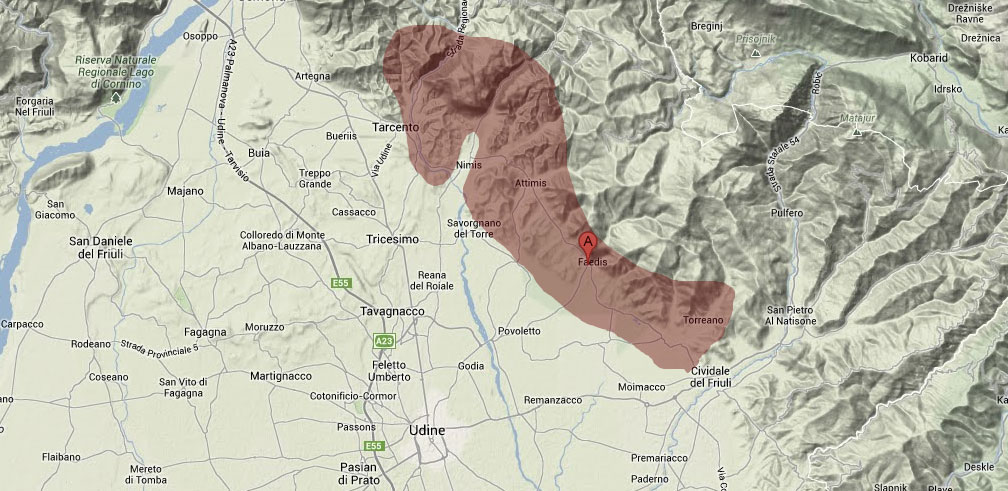
The production area of Refosco di Faedis extends over the territories of the municipalities of Faedis, Attimis, Nimis, Povoletto, Tarcento and Torreano, as specified in art. 3 of the "REFOSCO DI FAEDIS" SUBZONE ATTACHMENT, published in the “Gazzetta Ufficiale” (Official Gazette) of 15 June 2011.
Geographically, it is located north-east of Udine, in Eastern Friuli. It includes the upper part of the "Colli Orientali del Friuli" DOC area. Only wine produced in this area, following the dictates of the “disciplinare” (i.e. specification) published in the Official Gazette, can bear the name "Refosco di Faedis".
The winemakers of Refosco di Faedis meet several times a year, in order to taste the Refosco of each winery, take care of and protect the quality of the wine produced.
FAEDIS
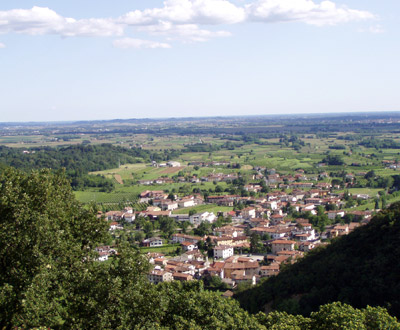 On the hills planted with vineyards, just when the Friulian green plain begins, is placed the region of the ancient Refosco of Faedis, rich in woods and uncontaminated waters.
On the hills planted with vineyards, just when the Friulian green plain begins, is placed the region of the ancient Refosco of Faedis, rich in woods and uncontaminated waters.
All the commune’s territory is a wise and spontaneous harmony of luxuriant nature and historic vestiges. Our guests are offered medieval atmosphere on hills where the castles of Cucagna, Zucco and Soffumbergo are placed; moreover you could visit elegant country residences such as Villa Freschi, Partistagno house or Villa Strassoldo and appreciate precious silences on tablelands full of little churches which are far from the noisy everyday life. Faedis is one of the 438 Italian wine-cities that give their name to a wine and produce high-quality wines.
It is also an area where peculiar cheese is produced: it is called goat’s milk cheese of Jama, a valley (in Slavonic the word jama means hole, cave) where goats Saanen are raised biologically and where appreciated mature and fresh cheeses are produced. FOR MORE INFOMATIONS, CLICK HERE.
ATTIMIS
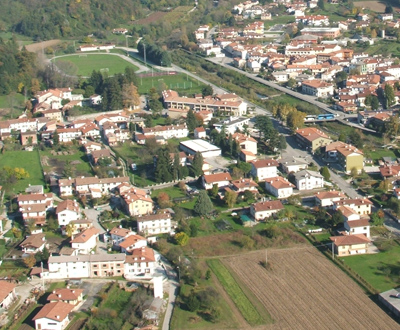 The charm of ancient castles that dominate these lands is integrated with the visit of the Medieval Archeological Museum which contains a lot of finds discovered in the innumerable important local sites, that can be reached by penetrating the uncontaminated natural spaces.
The charm of ancient castles that dominate these lands is integrated with the visit of the Medieval Archeological Museum which contains a lot of finds discovered in the innumerable important local sites, that can be reached by penetrating the uncontaminated natural spaces.
Wide forests rich in peculiar floral and faunistic species surround the historic buildings and the rural villages of Attimis and its hamlets, give deep silences to the holy places of worship and the votive churches. Deep religiousness and devoutness meet at the little chapel of Porzus dedicated to the appearance of the Blessed Virgin, where a lot of people go on a pilgrimage.
The ancient vineyards interchange with beeches, chestnut trees, oak trees and draw the passage from plains to the mountains, mark the rhytm of this region’s eastern area, which is characterized by the local people’s sincere hospitality and the quality of typical agroindustrial products that should be tasted when appreciating our wonderful landscapes.
NIMIS
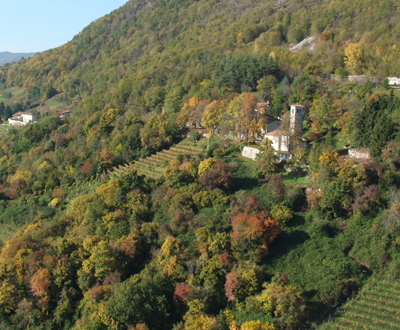 Nimis, built in the Roman period together with its hamlets and villages, had a very strategic importance in the Friuli’s Longobard duchy and offers one of the most ancient places of worship of our region: the SS. Gervasio and Protasio’s parish church. It was built on the ruins of a pre-Christian temple near the Castrum Nemas in the VIIIth century and it became a church with nave and two aisles around 1300.
Nimis, built in the Roman period together with its hamlets and villages, had a very strategic importance in the Friuli’s Longobard duchy and offers one of the most ancient places of worship of our region: the SS. Gervasio and Protasio’s parish church. It was built on the ruins of a pre-Christian temple near the Castrum Nemas in the VIIIth century and it became a church with nave and two aisles around 1300.
Very interesting are the castle of Cergneu, the seventeenth-century Madonna delle Pianelle’s sanctuary and the fifteenth-century S. Giovanni Battista’s church, from which you could appreciate the wonderful valley called Ramandolo where the homonymous wine, the first Friuli’s DOCG, is produced.
It is a green amphitheatre made of ancient and laborious terraces that are put well in order on the sweet hills at the foot of the Bernadia, where the peculiar climate mix intense sun and gentle and persistent rains; this mount, surrounded by luxuriant beechwoods, elms and acacias which are used in order to produce Nimis’ honey, make you remember nature’s spiritual vitality in Celtic legends and magic rituals.
Nimis is one of the 438 Italian wine-cities thanks to the great typicalness and quality of its wines, but also because its area gives its name to the Ramandolo, which is linked to this commune in a historic, traditional and cultural way.
TARCENTO
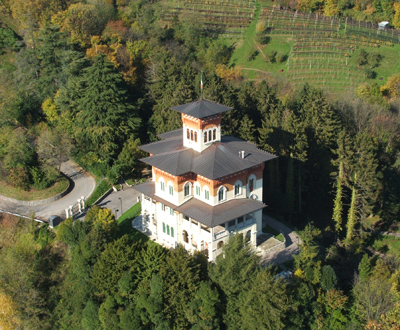 Tarcento, placed on the feet of the mounts Chiampeon, Stella and Bernadia, is a pearl set in the Torre’s clean waters and the hills populated with historic villages, rich in vineyards and woods, where people still preserve genuine and recognizable gestures, values, languages and traditions.
Tarcento, placed on the feet of the mounts Chiampeon, Stella and Bernadia, is a pearl set in the Torre’s clean waters and the hills populated with historic villages, rich in vineyards and woods, where people still preserve genuine and recognizable gestures, values, languages and traditions.
The sweet environment together with its comforting harmony are made precious by past traces: the castellaccio of Coia and the Villafredda village remind of the medieval period; the fourteenth-century S. Eufemia’s church in Segnacco offers a suggestive spiritual beauty and overlooks the hills and the mountains; in Aprato the Our Lady of Lily’s church showes the early sixteenth-century golden wooden altar by Agostini; in Collalto there is Villa Valentinis, in the town center you could appreciate the elegant Villa De Rubeis and Villa Pontoni, the wonderful Frangipane Palace with their parks and gardens and Villa Moretti that has been recently restored.
Our guests can go up the Zimor valley and reach the Stella, individualized by its church tower, that is a wonderful green balcony that overlooks Friuli. Moreover you could reach Useunt and its Our Lady of Peace’s church if you follow the paths through the Torre lined with chestnuts or the hospitable pathways full of bushes until the mount Bernadia where you could reach Ramandolo, a little jewel among vineyards that produce the precious DOCG wine called like the valley.
TORREANO
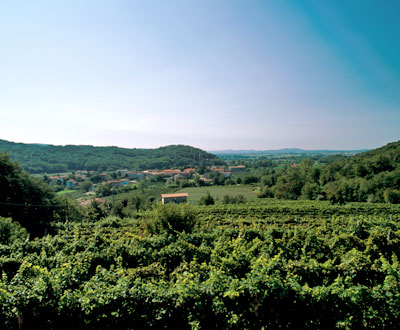 The territory of Torreano, of which half is flat and half is mountainous, hosts several lifestyles and activities related to the different nature of the soil. The population is ethnic Friulan in the plains region and ethnic Slovenian in the mountains; the two peoples, of different origins and customs, have typically and consistently cohabited peacefully in the area since extremely ancient times.
The territory of Torreano, of which half is flat and half is mountainous, hosts several lifestyles and activities related to the different nature of the soil. The population is ethnic Friulan in the plains region and ethnic Slovenian in the mountains; the two peoples, of different origins and customs, have typically and consistently cohabited peacefully in the area since extremely ancient times.
The area was almost definitely inhabited by the primitive populations of the Euganeans, the Ligurians, the Venetans and the Celtics and inhabitants undoubtedly settled here permanently in the Neolithic, Bronze and Iron Ages. The finds made in the Foràn di Landri cave above the suburb of Prestento testify to the appearance of humans in the area in prehistoric times. The birth of Torreano was definitely determined by the Romanisation of Friuli; in fact, the toponym derives from the name of a Roman centurion, Turius, who obtained the presidium.
The Church of San Rocco in Montina and the XV century votive Chapel dedicated to Saints Ermacora and Fortunato, situated above the suburb of Costa, are of particular interest.
POVOLETTO
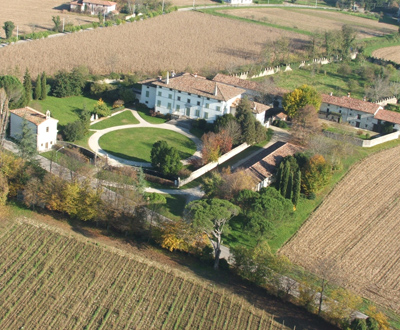 Rich in beauties of nature and characterized by the sweatness of its territory, Povoletto is placed on a green plain crossed by numerous watercourses and surrounded by hills quilted by vineyards and woods.
Rich in beauties of nature and characterized by the sweatness of its territory, Povoletto is placed on a green plain crossed by numerous watercourses and surrounded by hills quilted by vineyards and woods.
Its ancient villages invite you to appreciate the numerous wonderful villas, such as the Domus Magna of Partistagno in Belvedere, villa Mangilli in Savorgnano, villa Schubert in Marsure di Sotto, villa Belgrado Coren in Siacco, and to visit the suggestive remains of the complex of the High Middle Ages made of the Castle of Motta and the ancient Torre dei Savorgnan.
There are also a lot of signs of devotious piety present in all the hamlets: they are enriched by important works of art that can be appreciated in the fourteenth-century church in Magredis with the frescos by Thanner, the other one in Grions with its wonderful wooden Baroque altar by Ortari, the S. Nicolò church in Primulacco with the Passion of Christ frescoed by Thanner to. Povoletto is one of the 438 Italian wine-cities thanks to the great typicalness and quality of its wines Picolit, Verduzzo and Refosco di Faedis: an ancient tradition that is repeated above all on the hills of Savorgnano in vineyards and wineries which are looked after with love and ability.